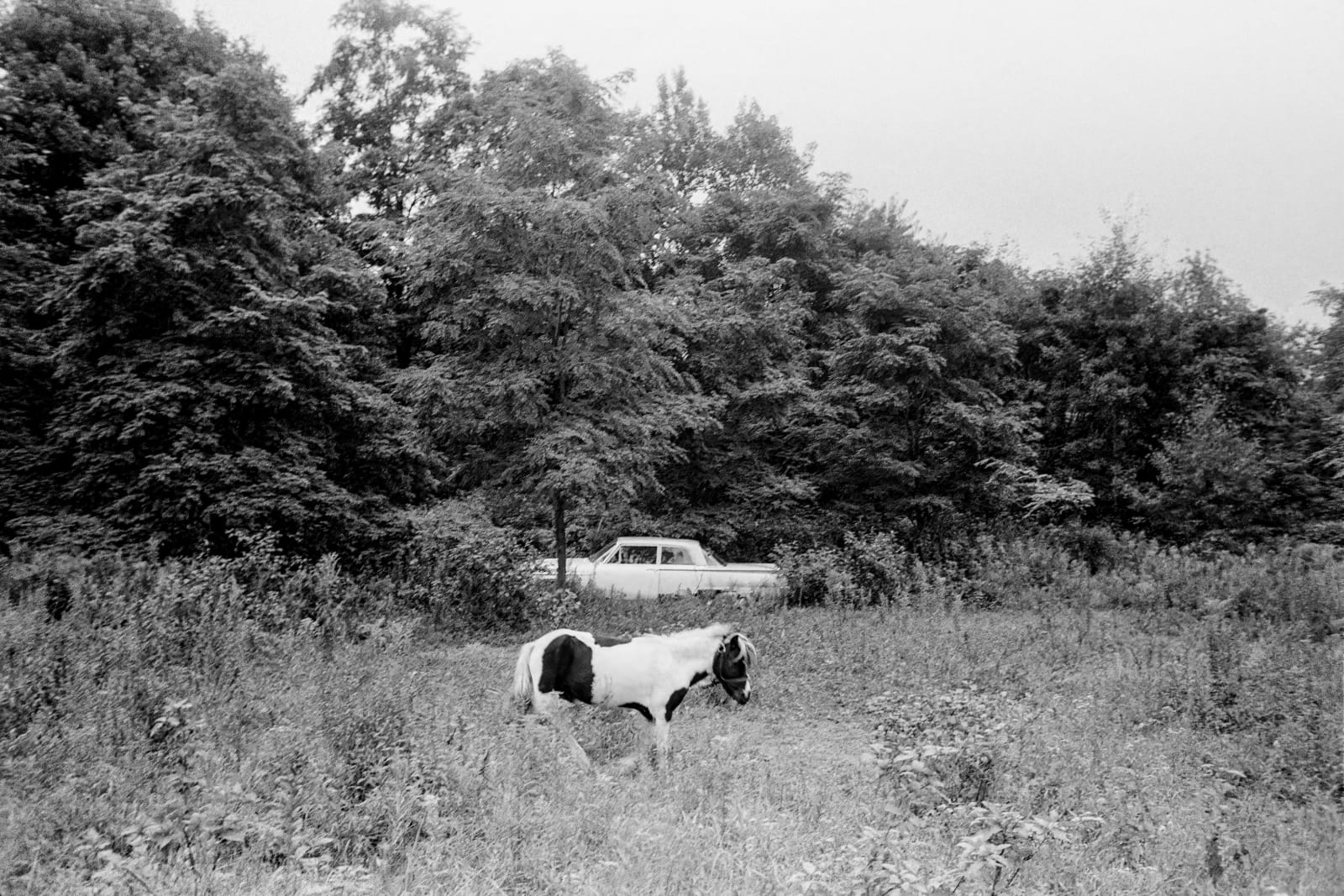
Clark Winter American, b. 27/10/1951
.
Paper: 40.6 x 50.8 cm / 16 x 20 in
.
Clark Winter's "Pasture, New Hampshire, 1971" operates as what photographer theorist Graham Clarke calls a "dense text" where meaning emerges through layered symbolic discourse rather than mere documentation.
The photograph presents a profound meditation on American rural identity through its central protagonists. The pinto pony, with its striking black-and-white markings, embodies the enduring spirit of agrarian America—representing not just livestock, but freedom, self-reliance, and humanity's ancestral bond with the land. Its direct, unflinching gaze toward the camera suggests both curiosity and resilience, as if acknowledging the photographer as witness to changing times.
The abandoned automobile transforms from mere object to cultural artifact, representing the promises and failures of post-war American prosperity. Half-swallowed by advancing vegetation, it becomes a monument to obsolescence, questioning assumptions about progress and permanence. This juxtaposition creates what Clarke describes as "simultaneous complexities and ambiguities" where meaning multiplies beyond simple documentation.
Winter's approach aligns with the emerging consciousness of 1970s photography that rejected romantic landscape idealization. The image reflects the "New Topographics" sensibility—finding profound meaning in ordinary, altered landscapes rather than pristine wilderness. This aesthetic choice connects to broader documentary traditions that sought to capture America's evolving relationship with its environment.
The composition's stark honesty recalls Walker Evans' Depression-era work, which found dignity in vernacular subjects through careful observation rather than sentimentality. Winter demonstrates similar restraint, allowing the scene's inherent drama to speak without manipulation.
The early 1970s marked rural New Hampshire's transformation as the "Back to the Land" movement drew urban refugees seeking authentic experiences while traditional farming communities faced economic challenges. Winter captures this pivotal moment when old and new ways of life coexisted uneasily.
The overgrown field itself tells a story of changing land use—perhaps agricultural abandonment or transition toward rewilding. This landscape bears witness to broader demographic shifts affecting rural New England, where industrialization had long drawn population away from farming communities, leaving behind both memories and remnants of earlier prosperity.